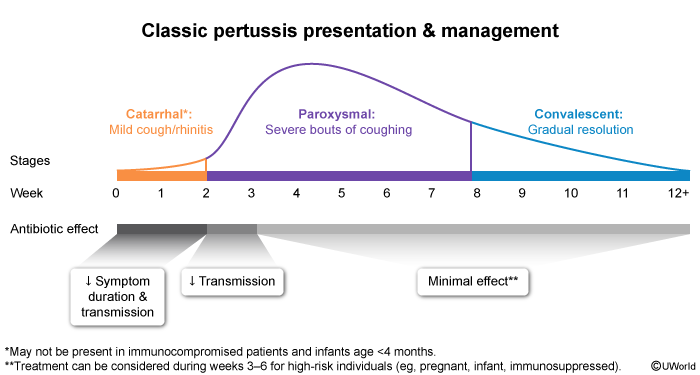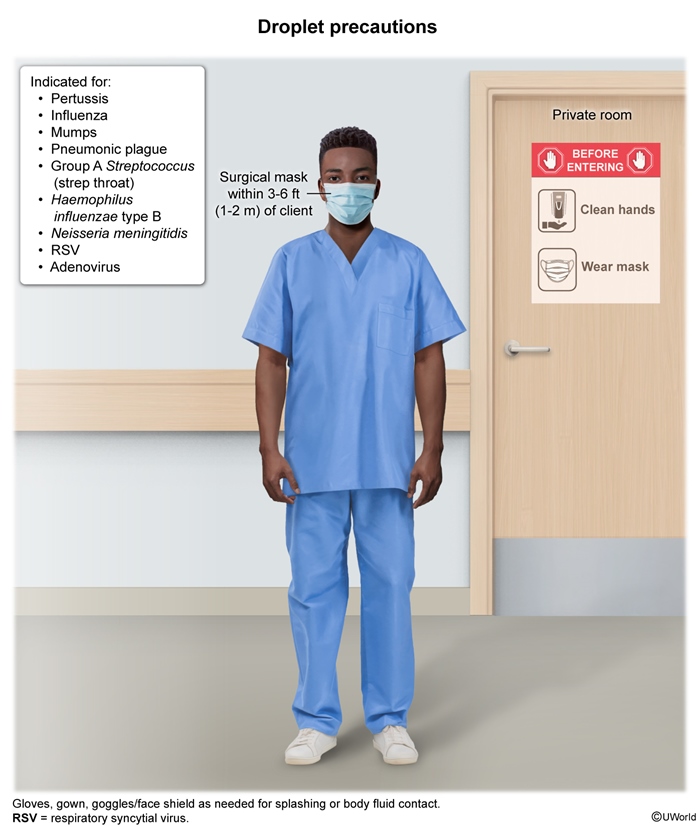Bordetella Pertussis
Article Sections
Introduction
Bordetella pertussis is a gram-negative coccobacilli that causes pertussis (whooping cough), a vaccine-preventable illness characterized by paroxysmal coughing often followed by a high-pitched inspiratory whoop.
Pathophysiology and risk factors
Bordetella pertussis is highly contagious and spreads through sustained contact with respiratory droplets (eg, coughing, sneezing) from infected individuals. B pertussis has unique virulence factors (eg, adhesins, filamentous hemagglutinin) that facilitate attachment to and colonization of ciliated respiratory epithelium in the nasopharynx and lower respiratory tract. Once attached, B pertussis secretes exotoxins that damage ciliated respiratory epithelium:
- Pertussis toxin: Activates intracellular adenylate cyclase to interfere with cellular signaling and inhibit phagocytic activity, impairing the patient's immune response.
- Tracheal cytotoxin: Damages ciliated epithelial cells, leading to impaired mucociliary clearance with subsequent microaspiration and severe paroxysmal cough.
Continue Learning with UWorld
Get the full Bordetella Pertussis article plus rich visuals, real-world cases, and in-depth insights from medical experts, all available through the UWorld Medical Library.
Figures

